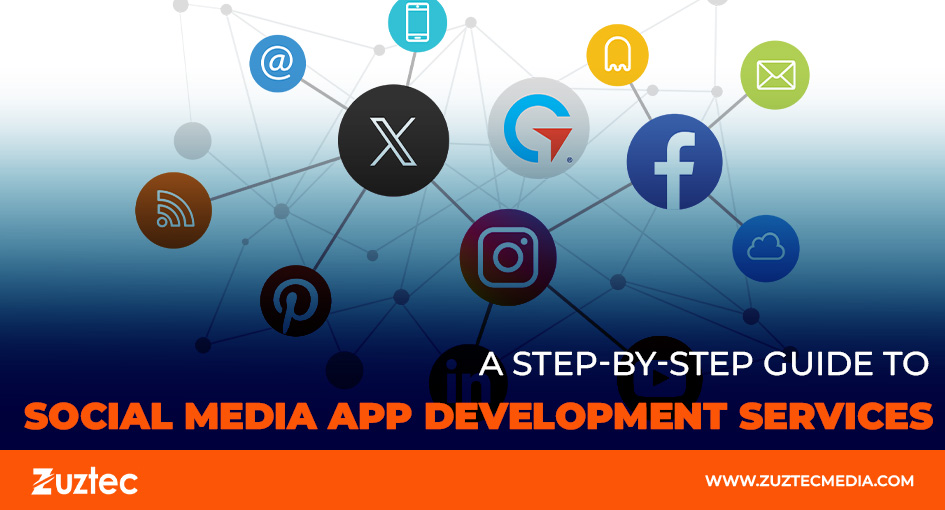
A Step-by-Step Guide to Social Media App Development Services
The demand for social media apps has skyrocketed in recent years, with businesses, influencers, and individuals looking for innovative ways to connect and engage with audiences. From platforms like Facebook and Instagram to niche networking apps, the social media app development industry is constantly evolving. However, developing a social media app requires more than just a great idea—it demands a structured development process, expert services, and the right technology stack to ensure success. Investing in social media app development services can help businesses create feature-rich and scalable apps tailored to their unique needs. Whether someone is launching a new social platform, building a community-based app, or integrating social networking features into an existing application, working with professional developers ensures high performance, security, and user engagement.
This guide provides a step-by-step overview of social media application development services, covering everything from market research and UI/UX design to backend development, security, and deployment. If one wants to build a successful social media app that stands out in a competitive market, understanding the development process is crucial. In this article, we will break down the essential stages involved in social media application development services, highlight best practices, and explore how businesses can leverage technology to create engaging and high-performing apps. Let’s dive into the complete development roadmap!
Step-by-Step Process of Social Media App Development Services
1. Market Research and Planning
Before starting development, thorough market research is essential to understand the target audience, competitors, and industry trends. Social media trends are constantly evolving, so identifying user pain points and gaps in the market helps create a competitive and user-friendly app.
Key Steps in Market Research:
- Identify your target users and their preferences
- Analyze competitor apps (e.g., Facebook, Instagram, TikTok, LinkedIn)
- Define the unique value proposition (UVP) of your app
- Determine the must-have features and functionality
A well-researched plan provides a strong foundation for the development process and ensures the app aligns with user expectations.
2. Defining Core Features and Functionalities
The next step in social media app development services is defining the app’s core features. A successful social media app should offer engaging, user-friendly, and interactive features to keep users engaged.
Essential Features of a Social Media App:
User Registration & Profiles: Secure sign-ups with customizable user profiles
News Feed & Content Sharing: Users can post text, images, videos, and links
Messaging & Chat: Private and group chat functionalities
Push Notifications: Real-time updates on activities and interactions
Live Streaming: A feature to broadcast live videos and interact with audiences
AI-powered recommendations: Personalized content and friend suggestions
Security & Privacy Settings: Two-factor authentication, data encryption, and user controls
Choosing the right set of features based on the app’s niche (e.g., business networking, entertainment, community building) is crucial for success.
3. UI/UX Design: Creating an Intuitive User Experience
User interface (UI) and user experience (UX) design play a vital role in user engagement and retention. A poorly designed app can drive users away, while a smooth, visually appealing interface enhances the overall experience.
Best Practices for UX/UI Design in Social Media Apps:
Minimalistic and User-Friendly Design: Clean layouts, easy navigation
Consistent Branding: Color schemes, logos, and typography that align with the brand
Interactive Elements: Like buttons, animations, and gestures for a seamless experience
Dark Mode & Customization: Options for users to personalize their interface
UI/UX designers should prioritize ease of use, accessibility, and aesthetics to make the app engaging.
4. Backend Development & Technology Stack
The backend of a social media app powers its core functionalities, managing user data, interactions, and real-time communication. Selecting the right technology stack ensures the app runs efficiently and scales as user demand grows, making social media app development services essential for building a high-performing platform.
Recommended Tech Stack for Social Media Apps:
Frontend: React Native, Flutter, Swift (iOS), Kotlin (Android)
Backends: Node.js, Python (Django/Flask), Ruby on Rails
Database: Firebase, PostgreSQL, MongoDB
Cloud Services: AWS, Google Cloud, Microsoft Azure
Security: OAuth, SSL encryption, multi-factor authentication
A robust backend ensures scalability, security, and fast performance for seamless user interactions.
5. Integrating AI & Machine Learning
AI-powered features can enhance user engagement and personalization in social media apps. Incorporating machine learning and artificial intelligence helps create a more intelligent and adaptive user experience.
AI Features in Social Media Apps:
Chatbots & Automated Responses: AI-powered chat support for instant assistance
Content Moderation: AI-based filtering for inappropriate content
Personalized Feed Algorithms: Suggesting relevant posts, friends, and communities
Image & Voice Recognition: Smart tagging, voice search, and facial recognition
AI integration not only improves user engagement but also enhances security and fraud detection within the app.
6. Security & Data Privacy Compliance
Security is a top priority in social media app development services, as these apps handle sensitive user data. Developers must ensure compliance with data protection regulations such as the GDPR (General Data Protection Regulation) and the CCPA (California Consumer Privacy Act).
Security measures for social media apps:
End-to-End Encryption: Secure messaging and data protection
Two-factor authentication (2FA): Added layer of login security
Regular Security Audits: Identifying vulnerabilities and patching them
Privacy Controls: Allowing users to manage data-sharing settings
Ensuring data security builds trust and credibility, encouraging more users to engage with the app.
7. Testing & Quality Assurance
Before launching, rigorous testing is necessary to eliminate bugs, performance issues, and security vulnerabilities. QA teams conduct various tests to ensure the app is fully functional across different devices and operating systems.
Types of Testing in Social Media App Development:
Functional Testing: Ensures all features work as intended
Performance Testing: Tests app speed, scalability, and responsiveness
Security Testing: Identifies and fixes security loopholes
User Acceptance Testing (UAT): Involves real users testing the app before launch
Thorough testing ensures a smooth and error-free user experience.
To sum up, developing a social media app involves a structured approach, from market research and UI/UX design to backend development, security, and post-launch maintenance. By leveraging professional social media app development services, businesses can create engaging, scalable, and secure platforms that thrive in a competitive market. If you’re planning to build a social media app, following this step-by-step guide ensures a seamless development process, delivering an innovative and high-performing app that meets user expectations. Ready to bring your idea to life? Start building your next-gen social media app today!

